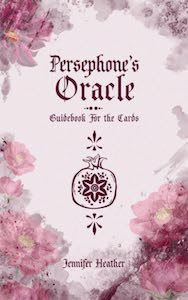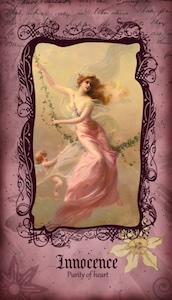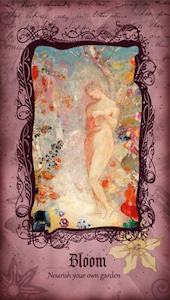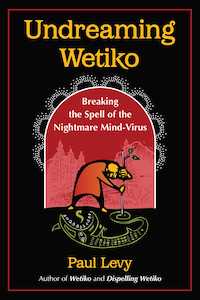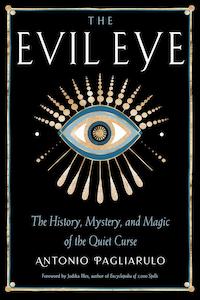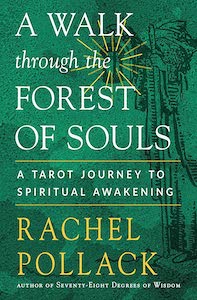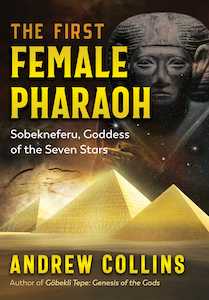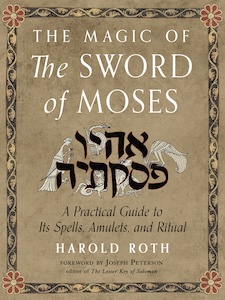
Pagan Portals – The Norns: Weavers of Fate and Magick, by Irisanya Moon
Moon Books, 1789049105, 112 pages, August 2023
From the Weird Sisters in Shakespeare’s Macbeth to the three witches in Disney’s 1993 cult classic Halloween film Hocus Pocus, the Triple Goddess of Fate haunts pop culture, bewitching the masses in the form of three meddlesome hags. Fate’s commercial success in such unflattering incarnations betrays how terrifying the concept of predestination is to contemporary Westerners who tenaciously cling to the secular cult of Free Will, despite the audacious philosophers and neuroscientists like Sam Harris who have declared that free will is an illusion. According to Harris, the conscious mind may believe it’s in control, but it only acts out decisions that have already been made by the subconscious mind. 1 Some people may even become enraged by the idea that there is no such thing as free will, because our culture places such high value on accepting personal responsibility for our successes and failures in life. There is a deep collective fear of not having control over our destinies.
In Pagan Portals – The Norns: Weavers of Fate and Magic, author, witch, and priestess Irisanya Moon reveals that the ancient Norse had a more holistic view, and saw Fate, or Wyrd, as an intricate web that both includes and transcends us. The Norns, the trio of mysterious goddesses who personify Fate in Norse mythology, are ubiquitous spirits, unseen yet all-pervasive, ever weaving the fabric of space and time. They occupy the liminal spaces, moving through us and around us, forever spinning the wheel of the Cosmos, and their spindle of Fate pricks the thumbs of both gods and mortals alike.
Because of their ubiquity, the Norns can be difficult to define. There are the primary three, named Urd, the Norn of What Was, who is associated with the past and creates the thread of life; Verdandi, the Norn of Becoming, or the present moment, who measures the thread of life; and Skuld, the Norn of What Shall Be, who cuts the thread at the end of life. The Norns also include a collective of female ancestral spirits called the dísir, who watch over humanity. Additionally, Moon points out that “a common meaning for norn in modern Icelandic is ‘witch’ or ‘hag’.”2
Instead of rehashing Norse myths that can be found in other books, Moon guides readers to discover who the Norns are by fostering intimate relationships with them. She encourages personal gnosis of these divine beings through a variety of exercises, such as “Stepping into the Worlds of the Norns”3 through trance.
As Moon invited me to travel in spirit to the World Tree and visit the Wyrd Sisters, I was flooded with vivid imagery. In an eldritch forest, I saw the World Tree Yggdrasil towering above the other trees, its evergreen boughs silvered by moonlight, dripping lunar dew over the Well of Fate, pooling in an earthen basin formed by the vast network of knotted roots. Three shadowy maidens rose from the depths of the lake, shifting shape. They coalesced into a trinity of spiders, weaving the elastic web of the Multiverse in the boughs of the World Tree. Infinite worlds were reflected in the dewdrops of their infinite eyes. I began to think of Yggdrasil as a human body, my body. My spine became the tree’s trunk, a ladder of bone that could take me up to Asgard, the realm of the gods, or down into the depths of Hel, the Norse Underworld. I realized that all the trees in the forest around me were other people’s World Trees. We live in a Multiverse where everyone is their own Yggdrasil.
“Everyone has a part of the wyrd, like a web, like a large woven tapestry,” Moon says. “My wyrd intersects with yours, perhaps. Yours intersects and pulls on mine. And all of this is what creates fate and destiny.”4
Together, we all shape Fate as a collective.
I was drawn to this book because I’m a fatalist. I believe that free will is an illusion, but I think that we should behave as though we have free will, and make responsible choices to the best of our abilities, even if our subconscious mind has already made them for us. It appears to me that there are too many external factors limiting any supposed free will that we mortals may have, from mental programming imprinted upon us as children by our parents and the culture in which we were raised, to societal limitations that limit our mobility as adults. I think that when we act out what we believe is our free will and pursue our dreams, we are in fact acting out our soul’s true purpose and what we are destined to do. We are coming into alignment with our True Will, which is the will of Fate.
I believe the excessive praise of individualism in Western civilization is harmful to the collective. The emphasis on individual free will and pulling oneself up by the bootstraps blinds us to systemic abuse and allows the continued oppression of large swathes of people. Everyone’s fate is connected. The focus on individualism creates the illusion that individuals are struggling alone. In truth, their struggles are shared with other people in similar circumstances, but in isolation, they are tricked into believing they should shoulder the burden of circumstances beyond their control all on their own.
I appreciate how Moon compassionately addresses the ways that Fate encompasses circumstances beyond one’s control.
“Dismantling the structures of oppression requires the commitment to uncovering and understanding that people do not all have the same opportunities,” Moon says. “Many are born into places that limit and seek to continue to hold them back.”5
This thought-provoking book had me pondering the shared Fate of the collective, the interconnectedness of people’s individual threads, and how great an impact any word or action, however small it may seem at the time, can have on so many people. I can recall times when the actions of others have inadvertently shifted my path, and I am sure I have had the same effect on other people as well, in ways which I am not aware. Just as Moon says, “I can choose to meet my fate in a way that is honorable and respectful of the collective versus just being out for myself.”6
My sole criticism of this work is that the author’s well-meaning efforts to be all-inclusive were superfluous to the point of distraction. For example, Moon spells the word “gods” with double ds (“godds”), to make it more gender inclusive, which I don’t feel is necessary, because I read the word “gods” as gender neutral without a second thought, and my inner editor kept flagging it as a spelling error.7
Moon also suggests that the gender of the dísir, who are traditionally female ancestors, may make some people uncomfortable, and “it might be more inclusive to expand this to those who birth or those who mother without being attached to gender.”8 I don’t understand why seeing the dísir as female matrons would be offensive, and I feel that we can learn more about their true essence by examining the traditional perceptions of these ancient spirits instead of projecting modern gender politics upon them. It would be far more interesting to explore why the dísir were perceived as female instead of dismissing their femininity and assigning them whatever gender feels more comfortable. I personally think the focus on female ancestors is beautiful because it emphasizes matrilineal descent, as opposed to our patriarchal society, which frets over paternity and erases the maternal line by only giving children the surname of the father. I feel that dismissing the female gender of the dísir only reinforces these patriarchal views.
It’s no accident that the maternal line is also known as the distaff line. 9 The word distaff is derived from the Old English, dis, meaning “bundle of flax” and stæf, meaning “staff,” so the distaff is a staff on the spinning wheel that was wound with flax in preparation for spinning. Meanwhile, the strikingly similar Old Norse word dís means “goddess,” and the plural form of dísir means “goddesses.”10 Spinning was traditionally women’s work, and the dísir are the spinning goddesses, the collective ancestral mothers. They are inherently feminine, and I think it would be disrespectful to change that just because their gender might make some people feel uncomfortable.
I see the Thread of Fate as the umbilical cord, which nourishes the fetus in the womb and connects the unborn child to the well of ancestral memory (the well of Urd). When the baby is born, the umbilical cord stretches out and is measured by Verdandi, in that precious and fleeting moment when mother and child are still connected. When the cord is cut by the midwife Skuld, the neonate takes their first breath of spirit, and accepts the destiny that has been gifted to them by the Norns.
I gained some wonderful insights into my personal perception of the Wyrd Sisters by experimenting with Moon’s exercises. While I prefer a more traditional view of the Norns, I feel that my disagreement with some of Moon’s progressive views produced creative tension that helped me further clarify my own relationship with these potent spirits.
Pagan Portals – The Norns: Weavers of Fate and Magick is a book that shifts one’s perspective from fearing Fate to embracing the mystery of how our individual fates intertwine with the world’s collective Fate and the greater destiny of the Multiverse. The exercises contained within encourage developing a personal connection with these transcendent powers through journaling, self-exploration, and trance work. For those who love journal prompts and guided meditations, this book can facilitate a deeper relationship with the mysterious spirits of Fate who watch over us all and guide us towards our destinies.

Rachel Christina McConnell is a witch, tarot reader, intuitive astrologer, and writing spider. She holds an MFA in Fiction from Columbia University in the City of New York. Her short stories have appeared in Dark Moon Lilith Press and Minerva Rising Press’s The Keeping Room. Links to her publications are available here: https://rachelchristinamcconnell.wordpress.com


